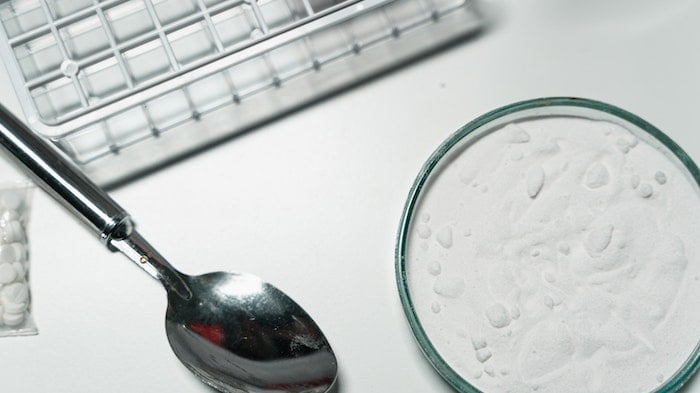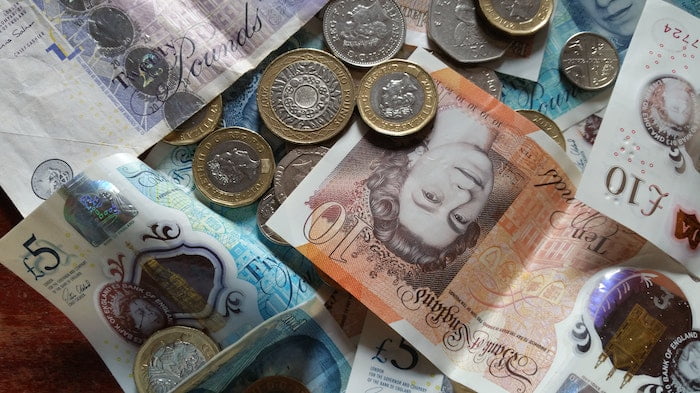How Can I Tell If Someone Is on Crack?
While not a household name in the positive sense, crack cocaine [1] is a well-known drug nonetheless, frequently depicted in film and media.
Also known as rock due to its solid, crystallized form, this drug has a similar chemical makeup as cocaine but is prepared and consumed differently.
Crack is often “cooked” from its original powdered cocaine form by adding water and baking soda before heating till crystalized.
This process produces a more potent drug that can be injected, snorted, or most commonly, smoked through a pipe.
Before being consumed, crack looks like small pieces of soap, or small, hard granules of rock. During the boiling process, crack makes a distinctive snapping, crackling noise from which its name derives.
While the effects are notoriously short-lived, they are felt immediately and produce intense feelings of euphoria, alertness and talkativeness.
After around 5-10 minutes, those taking crack will experience an intense crash that leaves them feeling anxious, irritable, and craving more of this highly addictive substance.
To learn more about the signs and symptoms of crack cocaine addiction, give our team a call on 0800 088 66 86
How Prevalent is Crack Addiction?

Since taking off in the 1970’s, various national surveys have been conducted in an attempt to figure out how many people are struggling with crack cocaine addiction.
Unfortunately, the UK is one of the top European nations when it comes to crack cocaine addiction, with hundreds of thousands of people presenting for treatment each year.
One government report [2] found that in recent years, the UK has harboured over 180,000 crack cocaine users, many of whom are still in the depths of their addiction and aren’t seeking help.
In fact, the proportion of crack users who are not in treatment is a shocking 58.0%.
Numbers of crack cocaine users, while levelled, remain significantly higher when compared to previous years. In 2019, Public Health England released an investigative report [3] to figure out why crack use had surged in many UK communities.
They found that overall crack use has increased by 4.4% since 2017, due to increased availability, affordability, and aggressive marketing from local drug dealers.
Talk to our experts about the impact of crack addiction by giving us a call today on 0800 088 66 86
Spotting The Signs of Crack Use

So, what with crack cocaine being easier to get hold of than ever, many people are trying this dangerous drug and getting sucked into a cycle of hazardous use.
You may have clicked on this article because you’re suspicious that a family member, work colleague, or friend may be using crack, and if this is the case, there are various tell-tale signs to be aware of.
If you know the signs, it can be fairly easy to gauge whether someone you know is high on crack cocaine.
There are myriad behavioural, psychological and physical indicators to watch out for, and we’ll explain all of them in further detail.
1. Restlessness and Increased Talking
Directly after smoking crack, the user will become incredibly chatty and also increase the speed at which they talk.
However, their topics of conversation won’t exactly be coherent.
It’s common for crack users to jump erratically from one subject to the next, seemingly just for the sake of talking.
Furthermore, they’ll likely struggle to remain coherent, and while they chatter quickly, they might skip certain words or jumble them together entirely.
This is because crack cocaine is a stimulant drug [4] that affects the brain almost immediately. Essentially, using stimulant drugs floods the brain with dopamine, a neurotransmitter that provides an intense feeling of reward.
With this in mind, consuming crack leads to a powerful rush and surge of energy that makes users want to do nothing else but talk, at least until the high wears off.
With increased talking comes increased restlessness, brought about by this sudden surge of energy.
Hyperactivity, both physical and psychological, is a tell-tale indicator of stimulant use.
Because of this, you may notice that someone on crack will become incredibly fidgety – they’ll have trouble sitting still, sweat profusely, and engage in various activities to try and handle their energy levels.
Due to increased heart rate and blood pressure, they might also experience visible muscle twitches and spasms.
2. Pupil Dilation
Another visible sign of someone being high on crack cocaine [5] is dilated pupils. Not only will their eyes appear larger, but they might also exhibit light sensitivity and seem bloodshot or watery.
This is known as “cocaine eyes” and occurs because stimulant drugs release endorphins in large amounts, causing the pupils to react by dilating.
The light sensitivity that this causes leads many cocaine and crack users to wear sunglasses at strange times, which can be another indicator of use.
Bloodshot eyes and pupil dilation often come hand in hand, since crack constricts the blood vessels while increasing vital signs such as heart rate, body temperature, and blood pressure.
This can also cause erratic eye movements and increased blinking.
3. Finding a Pipe or Other Paraphernalia
It’s likely you’ve already heard of the infamous pipe through which crack cocaine is smoked. This piece of paraphernalia is featured in various TV shows, from Breaking Bad to Orange is the New Black.
Also called “stems”, these glass pipes are usually the preferred method of ingesting the drug and are considered a tradition among long-term crack users.
So, how do you know whether you’ve stumbled across someone’s crack pipe, which will usually be just one of many?
Typically, these are straight, hollow glass tubes with a bulbous, rounded end. While usually made out of glass, these pipes can also be ceramic or metal.
Usually, crack rocks are packed into a hole at the top of the rounded end and heated underneath until steam is produced, which is then inhaled.
With continuous use, the bowl will become black on the outside and stained brown inside from frequent inhalations.
While these crack pipes are pretty easy to identify among someone’s belongings, other paraphernalia can be trickier to spot, sometimes coming in the form of household items.
Light bulbs are becoming an increasingly popular alternative to traditional pipes, as they can be found pretty much anywhere in the home.
Crack users remove the bulb’s inner workings, place the crack rocks inside the bulb, and light the outside of the glass, similar to a glass pipe.
Another critical form of paraphernalia to watch out for is the presence of empty baggies or wrappings that used to, or may still, contain crack. If you see those tell-tale rocks or shavings among the wrappings, how can you tell if it’s the drug in question?
Typically, crack has a smell similar to burnt plastic, but can also resemble gasoline, paint, and other chemicals.
To a non-crack user, the smell is quite overwhelming, but seasoned users will have long since adjusted to the aroma and will no longer notice it.

4. Mood Swings
Explosive highs and bleak lows are a large part of any crack user’s addiction journey, and these mood swings are another tangible sign that someone is using.
Like any stimulant, crack creates an instantaneous high that feels incredibly euphoric, producing feelings of happiness and giving the individual boundless energy while the drug works its way through the system.
However, these effects are short-lived, lasting 5 minutes at worst and only 15 minutes at best. As soon as the high wears off, users will start to feel fatigued, sad, and experience an overall shift in their mood.
As you can imagine, they will want to recreate this high as soon as they can, leading to anxiety, cravings and irritability.
When the high from crack depletes, the user is left with reduced dopamine levels after enjoying a brief rush of this happiness-inducing neurotransmitter.
Therefore, feelings of depression are common, and persistent low mood is something to look out for if you suspect a loved one is using this drug.
This constant yoyo effect in someone’s mood is easy to spot, with friends and family members unable to ignore what can look like a sudden personality change in their loved one.
Unfortunately, the psychological indicators of crack use do not end there.
In addition to these volatile mood swings, loved ones may also notice delusions and worrying symptoms of psychosis.
One of the most common delusions associated with crack is the feeling of bugs crawling under the skin, a condition known as “coke bugs” or formication.
For those who experience this, the sensation feels incredibly real and can lead to skin picking which in turn causes open sores.
While full-blown psychosis, wherein the individual loses touch with reality, can happen with consistent crack use, there are various symptoms that occur before this happens.
Panic attacks are a well-known psychological reaction to crack, alongside paranoia, hallucinations, and even aggression.
5. Insomnia
Any well-functioning human being will recognize the need for sleep when it arises. We experience a natural lapse in energy when our body needs to rest and seek out our beds as soon as we can.
Unfortunately, this is not the case for crack cocaine users, whose body clocks and energy levels are consistently out of balance.
Sleep-related issues such as insomnia occur in crack users because, as a stimulant drug, cocaine speeds up the central nervous system to produce more energy.
It also stimulates the release of dopamine, which will make someone feel more energetic by increasing their heart rate.
Problems start occurring when, instead of giving up crack, the person keeps on smoking it to try and push through the inevitable lows that follow the high.
Dangerously, this rewires the brain to not be able to recognize the need for sleep, despite needing it desperately.
So, in the long run, users may experience difficulty falling and staying asleep, increased wakefulness during the night, and a generally disrupted sleep pattern.
All of this means that, when trying to tell if someone is on crack, any problems they have sleeping or not sleeping is a tell-tale sign to look out for.
This may also lead to a visible lapse in self-care, with individuals forgetting to eat and drink as their cognitive issues worsen.
6. Changes in Appetite
The uncharacteristic bursts of energy followed by depletion affect every aspect of a crack user’s life, including their eating habits.
While they are high, each activity can take a manic turn and many people will eat food at an almost inhuman rate.
Akin to having the munchies, they’ll seem ravenous until their dose wears off, causing sudden binges and weight gain in the long term.
However, stimulant drugs affect everyone differently, and while one person might snack away whilst high, another may claim that they don’t need food at all.
Because crack raises energy levels, it can also lower appetite, and eating three meals per day can suddenly seem unnecessary.
For this reason, crack cocaine binges often mean that people go many days without eating, and if these people are binging regularly, weight loss is common.
If your loved one is using crack, they’ll likely experience weight loss with seemingly no explanation.
7. Financial Problems
A reliance on crack cocaine can cause those who were once financially stable to experience money struggles.
While crack is notoriously cheap, the amount a user will spend on acquiring it can quickly add up as their tolerance grows.
Eventually, they’ll need more and more to achieve the desired high and will spend any money they have on getting a satisfying hit.
So, if you’ve noticed some of the common signs of crack use coupled with financial loss in a loved one, crack cocaine may be the culprit. It might be that they suddenly beg you for money, despite you knowing that they have a well-paid job.
Or, they may lose their job altogether due to performance issues caused by their ongoing crack habit.

8. Withdrawal Symptoms
It’s important to be able to tell when someone is high on crack, but as you know by now, the euphoria users experience is fleeting.
However, the symptoms of withdrawal that follow this high will probably last longer, or at least until the person can source their next hit.
As a result, spotting the symptoms that occur when someone is off crack is one of the warning signs that they need your help.
Because of the discomfort they cause, many people end up using crack simply to avoid withdrawal symptoms, which can be both physical and psychological.
From intense cravings and zombie-like fatigue to restlessness and anxiety, the adverse side effects can vary depending on the person.
9. Psychological Symptoms
When someone can’t source their next dose of crack, they’ll go through a jarring change in their psychological state. Having gotten used to the intense brain activity that crack produces, going back to normal can feel very unpleasant and strange.
Around 12 hours after the high wears off, crack users often appear depressed and sluggish.
They might voice their gloominess and feelings of hopelessness to you, or withdraw into themselves.
This seemingly sudden depression can manifest as a lack of interest in anything and everything, causing people to avoid loved ones, miss appointments, or even stop going to work.
This rock-bottom mood can also lead to irritable, even volatile behaviour. Overwhelmed by cravings and a growing sense of unease, it’s not uncommon for people to lash out at those who care about them the most.
People going through crack withdrawal [7] might start arguments with loved ones, snap for no reason, and frequently lose their temper.
While severe depression is a common symptom, those suffering may swing to the other end of the withdrawal spectrum, experiencing anxiety, restlessness and agitation.
They might have trouble sitting still, complain that their heart is racing, or suffer from full-blown panic attacks.
This can be incredibly distressing to watch and is one of the most visible signs of crack withdrawal.
All of this can lead to sleeping problems, usually in the form of insomnia or vivid nightmares. One person may find they are unable to sleep at all, while another will sleep excessively and be plagued with horrifying dreams.
10. Physical Symptoms
Unlike alcohol or heroin withdrawal, crack cocaine isn’t known for producing dangerous physical symptoms.
Instead, how coming off crack impacts someone physically is likely to be a result of debilitating mental symptoms that have a knock-on effect.
For example, due to feelings of anxiety and restlessness, someone dependent on crack can start to experience insomnia, which will in turn lead to fatigue as part of their withdrawal.
In another instance, those feeling depressed might go for long periods without eating or drinking, causing them to become severely dehydrated.
Think you’ve started to spot the signs of crack cocaine use? Call us today on 0800 088 66 86
How Can I Intervene?

We’re deeply sorry if you’ve identified signs that a loved one is using crack cocaine, but it’s important to know that there’s help available.
Oftentimes, someone using crack will compulsively seek out the drug, and they may not respond well to a family member trying to get them professional help. This is where staging an intervention comes in.
An intervention provides a crucial opportunity to communicate with your loved one in a non-confrontational way.
During the session (or multiple sessions) you’ll be able to express the ways in which your loved one’s crack abuse has impacted you.
Because the victim of crack addiction is surrounded by those who care about them, he or she will be more likely to accept the treatment offered to them.
Here at Rehab Recovery, we can recommend a licensed interventionist in your area who specializes in those with stimulant drug addictions.
These are professionals with experience in helping families get an addicted loved one into rehab or another form of treatment.
Every aspect of the intervention will be personalized to your family’s unique dynamic, and take into account the personal needs of the intervention subject.
For help organising an effective intervention for crack cocaine addiction, call our expert team on 0800 088 66 86
Treatment For Crack Cocaine Addiction

Treating crack cocaine addictions is far from easy, but many people learn to manage their condition with the right combination of detox, counselling and medication.
Depending on your loved one’s addiction severity, treatment can take place in hospitals, fellowship groups, or in clinical settings such as inpatient rehab.
Due to the risk of relapse, inpatient rehab treatment has become one of the most widely used methods for treating crack dependence.
By entering rehab, those addicted can learn how to regain control over their life and build various coping mechanisms to aid them in their recovery.
Start your treatment journey today by calling us on 0800 088 66 86
References
[1] https://nida.nih.gov/publications/drugfacts/cocaine
[3] https://www.gov.uk/government/news/phe-publish-investigative-report-on-increasing-crack-use
[4] https://www.ncbi.nlm.nih.gov/books/NBK539896/
[5] https://www.nhs.uk/live-well/addiction-support/cocaine-get-help/
[6] https://www.google.com.vn/books/edition/Through_the_Eyes_of_Ophelia/RMW9iSgbOIYC?hl=en&gbpv=0
[7] https://www.google.com.vn/books/edition/Crack_Cocaine/fRrHBQAAQBAJ?hl=en&gbpv=0




